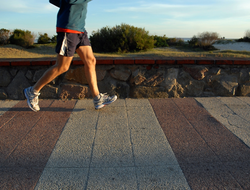Blood pressure, physical activity and nutrition
Published: October 28, 2022
Hypertension is sometimes referred to as the “silent killer”.
The condition of higher than normal blood pressure often goes undetected and undiagnosed for many years.
For some people the first sign of the condition is a stroke, which can be fatal.
If you have regular (annual) health check-ups your physician will take you blood pressure as part of the procedure.
However, if you have never had your blood pressure checked or do not have regular health check-ups your blood pressure status may be unknown.
Even if your blood pressure was Ok 5 years ago, it may not be today.
There are several risk factors for hypertension some of which you cannot modify, but several which you can:
- Gender: the risk is greater in men than in women, but increases for women post menopause
- Age: blood pressure increases with age due to loss of elasticity in your arteries and capillaries
- Heredity: If a family member has hypertension this increases your risk
- Race: Highest risk among African Americans
- Smoking: increases the overall workload on your heart
- Alcohol consumption: more than 2 drinks per day may raise blood pressure
- interfere with drug therapy
- increase your risk for stroke independently of hypertension
- Overweigh/obesity: extra adipose tissue contains extra miles of capillaries through which blood must be pumped and increases workload of your heart
- Sedentary lifestyle: lack of physical activity
- High blood lipids (high cholesterol): contribute to atherosclerosis and hypertension
- Diabetes: people with diabetes type 2 who are overweight and insulin resistant;
- Pregnancy: pre-existing untreated hypertension increases risk of pre-eclampsia and eclamspia
The risk for heart disease (stroke) increases the higher your blood pressure above normal, regardless of your age or gender.
So what is blood pressure, what is considered normal and what is high?
Blood pressure
Blood pressure is a reflection of:
- the strength of your heart beat
- the elasticity of your arteries and capillaries
- how efficiently your blood flows through your cardiovascular system.
Blood pressure is the pressure that the blood pumped from your heart exerts on the walls of your blood vessels.
There are two pressures: diastolic and systolic.
Diastolic pressure identifies the lowest pressure in your cardiovascular system just before your heart contracts.
Systolic pressure identifies the highest pressure in your cardiovascular system just after your heart contracts.
Follow the links to the full article to learn more about blood pressure and the beneficial effects of physical activity and nutrition.
References
1.
Whitney, E. & Rady Rolfes, S. (2005). Understanding Nutrition. Belmont, CA: Thomson Wadsworth
2.
CSEP (2013) Physical Activity Training for Health Canadian Society for Exercise Physiology
3.
Centre for Science in the Public Interest (May, 2013, October 2010, March 2007, November 2010)


